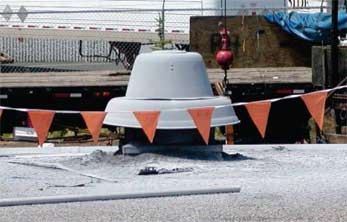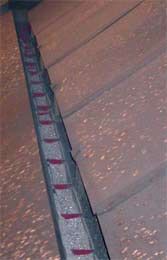by Kathy Hiltner
This article first appeared in Law Officer magazine: Subscribe
Potentially dangerous exposures to lead can occur in both indoor and outdoor gun ranges. Lead originates from unjacketed lead bullets, primer compound, discharge of a firearm, and fragmentation of the bullet against the target and backdrop. Lead dust from these activities hangs in the air, and then is partially taken up by the range’s exhaust system, or in outdoor settings, by wind currents and waterways. The remaining airborne lead dust settles on the ceiling, walls, floor, ground and other surfaces. Hazards occur when officers come into contact with lead-dust sources, such as loading ammunition, target shooting, retrieving spent brass, gun cleaning and range cleaning.
Lead dust enters the body primarily through inhalation and ingestion. The degree of lead exposure is measured through regular blood tests outlined in OSHA’s medical surveillance program. When blood-lead levels from range work exceed 40 Ìg per 100g of whole blood, it’s considered a work-related injury and reportable under the worker’s compensation program. High blood-lead levels lead to kidney problems, central nervous system damage and gastrointestinal complaints. Chronic lead exposure in pregnant women may result in fetal damage manifested as reduced birth weight, reduced red blood cell production and reduced intelligence.
The Pontiac Police Department
In 1990, Officer Wendy Keelty-Reyes, a firearms instructor for the Pontiac (Mich.) Police Department (PPD), developed a lead taste in her mouth on several occasions while shooting on her department’s indoor gun range. In addition, she noticed the ventilation system in the range did not operate on a regular basis while officers performed training activities. She informed department personnel of her concerns, and they sought help from the Occupational Safety and Health Administration (OSHA) to determine what problems might exist and how to correct them.
 PHOTO COURTESY EMPLOYEES ASSOCIATIONS, INC. Note the lead dust around this exhaust fan, which is deployed above a shooting range. |
The PPD knew of various regulations for range activities, but did not have the resources to put together a program that would meet all the requirements. Working with the Consulting, Education and Training (CET) division of Michigan’s OSHA office seemed the most reasonable way to solve its range problems.
 PHOTO COURTESY EMPLOYEES ASSOCIATIONS, INC. Part of a bullet-trap system at a shooting range, these plastic containers are filled with lead fragments. |
OSHA dispatched an industrial hygienist to perform a site evaluation at the PPD. He reviewed the department’s educational program regarding lead exposure. Next, OSHA tested both range personnel and stationary locations within the range to determine if lead dust was present. Keelty-Reyes participated in the personal breathing-zone (PBZ) test, which verified she was exposed to lead dust while conducting training activities in the gun range. The industrial hygienist also evaluated the ventilation system, cleaning activities on the range and the department’s respiratory protection program.
When OSHA received confirmation of high levels of lead dust in the PPD’s gun range, it temporarily shut the range down while the PPD made improvements. The PPD implemented respiratory protection and medical surveillance programs, and developed a policy-and-procedure manual to ensure safety among officers and range personnel. PPD administrators chose to hire a professional contractor to regularly clean its gun range, eliminating the need for an extensive cleaning policy. These improvements made a positive effect on range personnel and made the PPD’s gun-range one of the best facilities in the area.
The PPD range masters continue to review their policy-and-procedures on an annual basis with consideration of newer products on the market and the enforcement of their general rules and regulations. Keelty-Reyes is now a captain in charge of the detective bureau, narcotics and CSI divisions, where she continues to monitor range safety practices within the PPD. The department hasn’t had any further problems with lead dust, and it continues to maintain one of the safest gun ranges in the county.
Your Range
OSHA’s Compliance Assistance Specialists (CASs) and the CET division can help facilities with OSHA-compliance issues. By contacting these divisions at your state office, your department can request on-site inspections without penalty if you agree to correct health and safety hazards inspectors uncover. Your department may also choose to consult a private industrial hygienist or environmental safety company to perform these evaluations.
Kathy Hiltner holds a bachelor’s degree with a focus in occupational health and safety from Oakland University. She is the safety director for the Detroit Pistons and Palace Sports & Entertainment, and, for the last 10 years, she’s volunteered as a reserve officer for the Oakland County (Mich.) Sheriff’s Office, assigned to SWAT as the medic.



